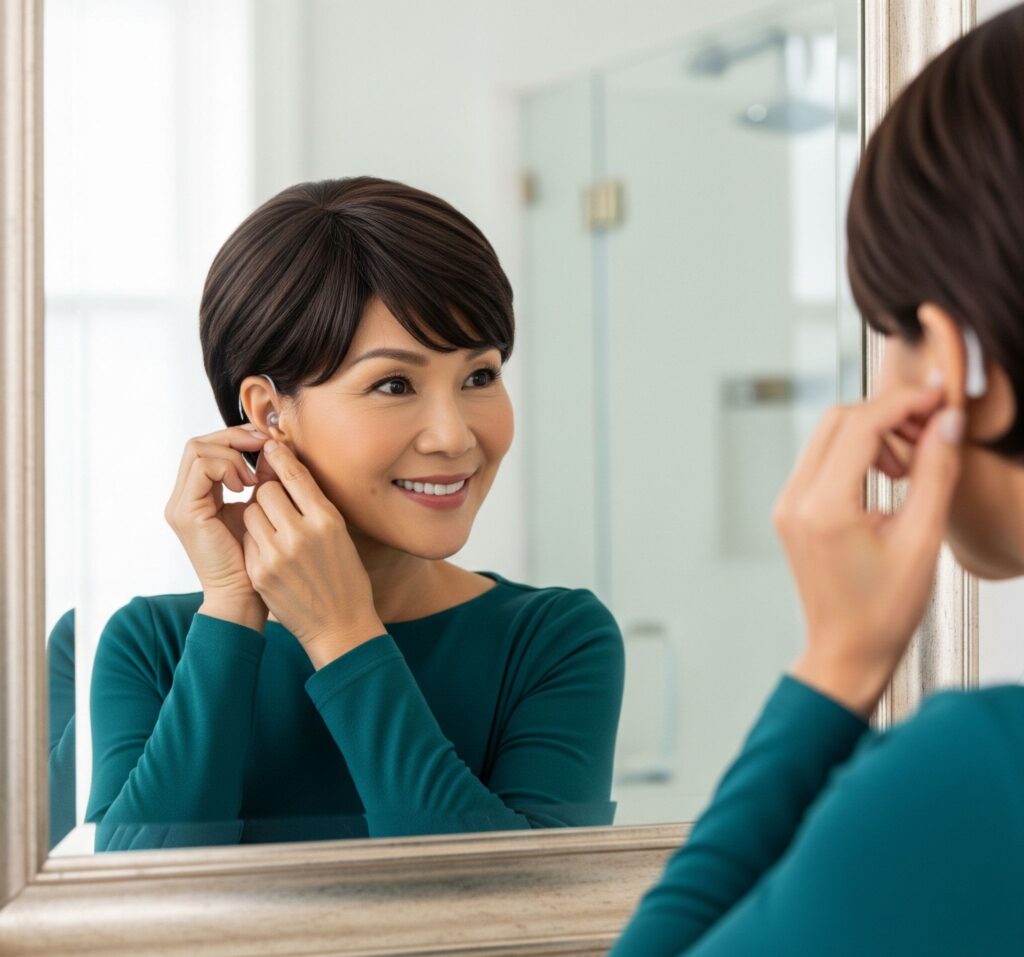For many people, both wigs and hearing aids are important tools for feeling confident and comfortable in daily life. But wearing them together can feel tricky at first — you don’t want your wig to interfere with your device or feel uncomfortable around your ears.
Fortunately, with the right wig style, fit, and a few simple adjustments, you can enjoy both beautiful hair and clear hearing without compromise. Here’s how to choose and wear wigs that work seamlessly with hearing aids, so you can look and feel your best.
Why It’s Important to Choose the Right Wig
Hearing aids sit either inside the ear canal or just behind the ear. A bulky or tight wig cap can press against your device, causing discomfort, feedback noise, or even knocking it loose.
The right wig makes all the difference by providing:
✅ A secure yet gentle fit around your ears
✅ Enough room for your hearing aid to function properly
✅ Confidence that everything stays in place — even on busy days
Features to Look For in a Hearing Aid-Friendly Wig
👂 Lightweight & Breathable Cap
Look for wigs with thin, breathable caps made of lace or monofilament. These materials are softer on the skin and less likely to irritate the area around your ears.
👂 Adjustable Straps
Most wigs come with adjustable straps inside the cap. Loosen them slightly to create enough space for your hearing aids without making the wig feel loose.
👂 Open Ear Tabs
Some wigs have “open ear tabs” — small flaps at the side of the cap that sit above the ear but don’t press tightly against it. These designs are especially comfortable if you wear behind-the-ear hearing aids.
👂 Shorter Styles
If you’re new to wearing both, a shorter wig (like a bob, pixie, or shoulder-length cut) can feel lighter and less likely to snag on your device.
How to Wear a Wig with Hearing Aids
✔ Put Your Hearing Aid in First: Always insert and adjust your hearing aid before putting on your wig. This makes it easier to check that nothing is being displaced.
✔ Adjust in Front of a Mirror: After putting on the wig, use a mirror to check that the ear tabs are sitting comfortably above your hearing aids without pressure.
✔ Test for Feedback: Move your head, speak, and listen carefully. If you hear any buzzing or feedback, try adjusting the wig cap or loosening the straps.
✔ Secure Wisely: If needed, use wig grips or light adhesive to help keep the wig in place without having to tighten it too much around your ears.
Tips for Everyday Comfort & Confidence
💡 Consider having your wig professionally trimmed around the ear area for a custom fit.
💡 Choose wigs with softer linings to prevent irritation on sensitive skin.
💡 Alternate between different styles to find what works best for you.
💡 Practice at home until you’re comfortable wearing both together.
Final Thoughts: Hear & Shine Without Compromise
Wigs and hearing aids don’t have to compete — with the right fit and a little practice, you can wear both confidently and comfortably. The right wig allows you to showcase your style while supporting your hearing needs, proving that beauty and practicality go hand in hand.
So go ahead and embrace your look, knowing you can hear, move, and shine at the same time!


